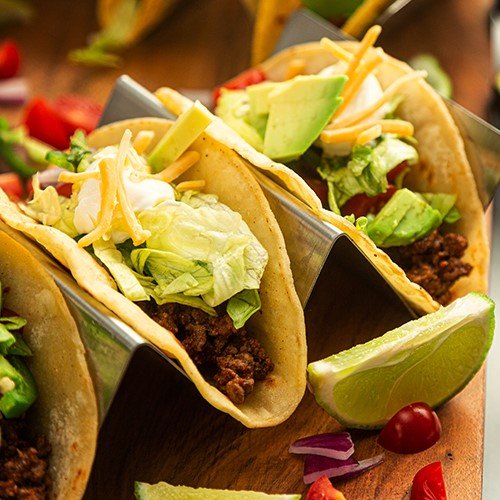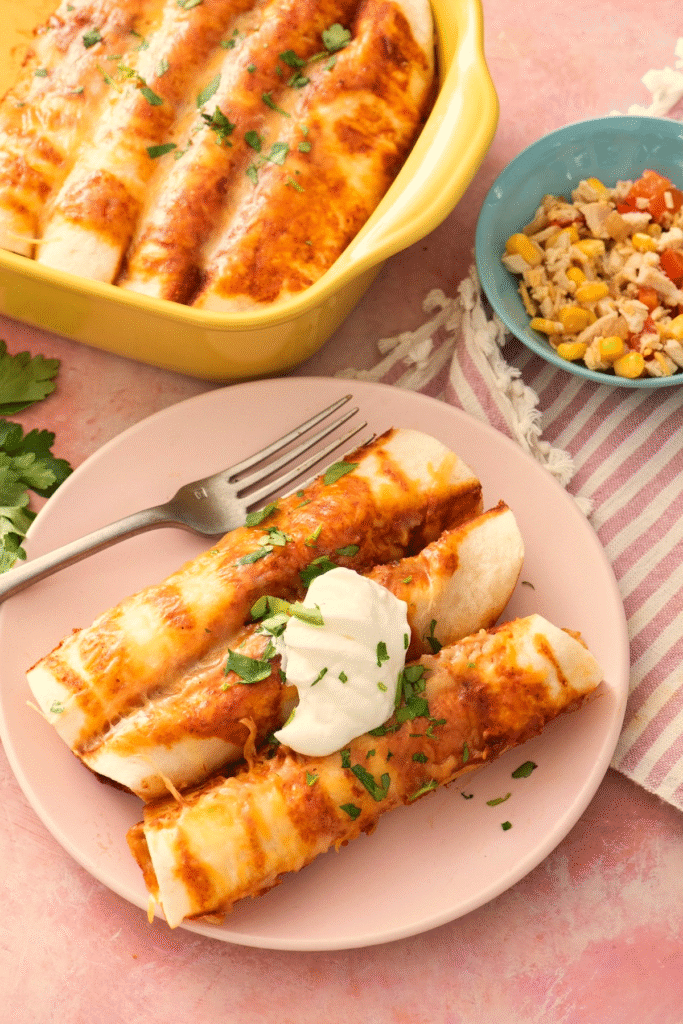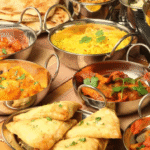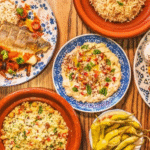Traditional Mexican Recipes: Tacos, Enchiladas & More
Mexican cuisine is more than just food—it’s history, culture, and tradition wrapped in vibrant flavors. Recognized by UNESCO as an Intangible Cultural Heritage of Humanity, traditional Mexican cooking combines indigenous ingredients with Spanish influences, resulting in a cuisine that’s beloved worldwide.
From street-style tacos to comforting enchiladas, every dish tells a story. In this guide, we’ll explore some of Mexico’s most iconic recipes, with practical tips and cultural insights so you can recreate them in your own kitchen.
Why Traditional Mexican Food is Special
Story: When Sofia, a second-generation Mexican-American, moved to New York for college, she missed her grandmother’s handmade tortillas and homemade mole sauce. Fast food tacos didn’t compare. To stay connected to her roots, she started cooking family recipes and sharing them with roommates. What began as nostalgia became a bonding experience—her non-Mexican friends fell in love with the flavors.
Key Traits of Traditional Mexican Cuisine:
Fresh ingredients: Corn, beans, tomatoes, chilies, herbs.
Bold flavors: Layers of spice, tang, and smokiness.
Cultural rituals: Many dishes are tied to festivals, family gatherings, or regional pride.
Balance: Every meal finds harmony between texture, spice, and richness.
Classic Traditional Mexican Recipes You Should Try
1. Tacos al Pastor
Origin: Mexico City (inspired by Lebanese shawarma).
Thin slices of pork are marinated with chilies, pineapple, and spices, then slow-cooked on a vertical spit.
Case Study: Tacos al pastor became Mexico’s most popular street food in the 1960s. Today, they’re enjoyed worldwide, from Los Angeles food trucks to Madrid taquerías.
Cooking Tip: If you don’t have a spit, marinate pork overnight and grill it. Add pineapple chunks for authenticity.

2. Enchiladas Verdes
Corn tortillas rolled around chicken or cheese, covered with tangy green salsa made from tomatillos.
Story: Enchiladas were first mentioned in Aztec times when tortillas were dipped in chili sauce. Today, every region has its version—from mole enchiladas in Puebla to seafood ones along the coast.
Cooking Tip: Lightly fry tortillas before rolling so they don’t tear.
3. Tamales
Masa dough filled with meat, cheese, or beans, wrapped in corn husks, and steamed.
Cultural Insight: Tamales are traditional for celebrations like Christmas and Día de los Muertos. Families often gather in an assembly line to make dozens at once.
Cooking Tip: Use fresh masa if possible; it gives the tamales a softer, authentic texture.
4. Chiles Rellenos
Poblano peppers stuffed with cheese or meat, dipped in egg batter, and fried, then topped with tomato sauce.
Case Study: In Puebla, Chiles en Nogada (a version of stuffed peppers with walnut sauce) are a patriotic dish, representing the colors of the Mexican flag.
Cooking Tip: Roast and peel peppers before stuffing to remove bitterness.
5. Pozole
A hominy-based soup, typically cooked with pork or chicken, garnished with radishes, lettuce, onion, and lime.
Story: Pozole dates back to pre-Columbian times, once reserved for sacred ceremonies. Today, it’s a family comfort food served during holidays.
Cooking Tip: Simmer slowly to let flavors develop; serve with crispy tostadas on the side.
6. Mole Poblano
A complex sauce made from chilies, nuts, spices, and a hint of chocolate, poured over chicken or turkey.
Case Study: Mole has over 20 ingredients and is often prepared for weddings and celebrations. In Puebla, locals proudly call it their signature dish.
Cooking Tip: Toast ingredients before blending to unlock flavor depth.
7. Guacamole
A simple yet iconic dish made with mashed avocado, lime, onion, tomato, and cilantro.
Story: Guacamole has Aztec origins, originally made with avocados, tomatoes, and chili peppers. Today, it’s one of Mexico’s most famous culinary exports.
Cooking Tip: Leave the avocado pit in the bowl to slow browning.

8. Sopes
Thick corn masa cakes topped with beans, lettuce, salsa, cheese, and meat.
Cultural Note: Often sold in street markets, sopes are like Mexico’s version of open-faced sandwiches—perfect for snacking.
Cooking Tip: Press down the center while cooking to create a “bowl” shape for toppings.
9. Elote (Mexican Street Corn)
Grilled corn on the cob slathered with mayo, cheese, chili powder, and lime.
Case Study: Elote is a street food classic—vendors in Mexico City sell it late into the night, drawing crowds after concerts and soccer games.
Cooking Tip: Use cotija cheese for authenticity, but Parmesan works as a substitute.
10. Arroz con Leche (Rice Pudding)
A comforting dessert made with rice, milk, cinnamon, and raisins.
Story: Spanish colonists brought rice and sugar to Mexico, blending them with native cinnamon. Today, arroz con leche is a sweet staple served at family dinners.
Cooking Tip: Stir often while cooking to achieve creamy consistency.
Cooking Mexican Food at Home: Tips for Success
Invest in Spices & Chilies – Dried chilies (ancho, guajillo, pasilla) are essential.
Use Fresh Corn Tortillas – They make all the difference in tacos and enchiladas.
Balance Flavors – Mexican food is about contrasts: smoky with tangy, spicy with creamy.
Don’t Skip Garnishes – Cilantro, lime, onions, and radishes bring dishes alive.
Cook with Love – Many traditional dishes are slow-cooked, meant for sharing.
Real-Life Example: Mexican Food Abroad
In Toronto, Chef Alejandro opened a taquería featuring only traditional recipes his grandmother taught him. Instead of Tex-Mex versions, he served tacos al pastor, mole poblano, and elote. At first, locals were hesitant, but within a year, his restaurant became one of the city’s top-rated spots. His success proves that authentic Mexican flavors resonate globally when prepared with respect.
Conclusion
Traditional Mexican recipes like tacos, enchiladas, tamales, and mole aren’t just meals—they’re cultural experiences. Each dish reflects Mexico’s history, creativity, and love for community.
By cooking these dishes at home, you’re not just feeding yourself—you’re carrying on centuries of culinary tradition. So the next time you crave Mexican food, skip the drive-thru tacos and instead roll up your sleeves: make enchiladas verdes, grill some elote, or simmer a big pot of pozole.
Authentic, homemade Mexican food tastes better—and tells a story with every bite.
References
UNESCO – Mexican Cuisine as Intangible Cultural Heritage
Smithsonian Magazine – The History of Tacos al Pastor
National Geographic – Origins of Tamales
Saveur – Traditional Mole Recipes
Serious Eats – Guide to Mexican Chilies
The Guardian – Why Guacamole is a Global Favorite
Mexico Desconocido – Regional Mexican Foods Explained
Bon Appétit – Enchiladas: A Deep Dive
The Spruce Eats – How to Make Authentic Pozole
BBC Travel –
The Global Rise of Mexican Street Food


